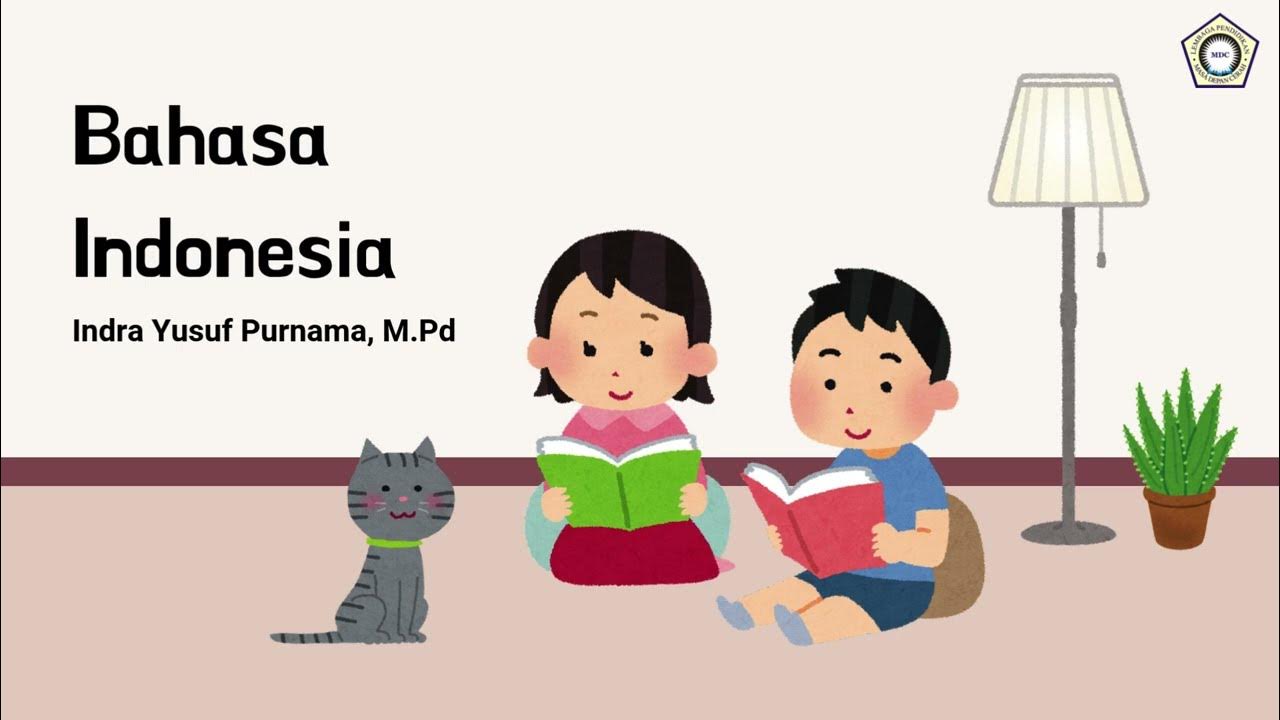MATERI PEMBELAJARAN TEKS ANEKDOT FASE E KURIKULUM MERDEKA
Summary
TLDRThis video explains the concept of anecdotal texts for high school students, focusing on how humor can be used to critique social issues. It covers the definition, structure, and characteristics of anecdotal texts, including how they can be represented through comics. Additionally, it introduces rhetorical devices like irony, sarcasm, and rhetorical questions that enhance the effectiveness of the critique. The video also touches on stand-up comedy as a form of criticism and emphasizes the importance of politeness and factual accuracy when delivering comedic critique.
Takeaways
- 😀 Anecdotes are short texts containing humor and criticism, often highlighting real-life social issues.
- 📖 Anecdotes can be delivered in various forms such as written text, audio, or visual graphics like comics.
- 🎭 Comics are a common medium for anecdotes, combining text and images in a sequential order to tell a story.
- 🎨 In comics, key elements include panels (frames showing specific moments), gutters (spaces between panels), and speech balloons (used for character dialogues).
- 👥 Anecdotes often involve famous figures or real-life events but can also feature fictional or everyday characters.
- 💡 The primary goal of an anecdote is to entertain while revealing broader truths or offering subtle criticism of societal issues.
- 🧐 Key features of anecdotes include rhetorical questions, irony, and satire, which convey messages in a humorous or sharp way.
- ✏️ Common narrative structures for anecdotes consist of orientation (introduction), complication (problem), and evaluation (commentary or lesson).
- 🎤 Stand-up comedy, another form of anecdotal delivery, combines humor with social critique, with structured elements like setup, punchline, and the rule of three.
- 👔 When delivering anecdotes or stand-up comedy, politeness in language, valid criticism, and appropriate dress and gestures are important for respectful communication.
Q & A
What is the main topic discussed in the video script?
-The main topic is understanding anecdotal texts and how they are used to express criticism in a humorous way. The video also covers the structure of anecdotal texts and their use in comics.
What is the definition of an anecdote as explained in the script?
-An anecdote is a short story that contains criticism or satire, often presented humorously. It usually highlights real social issues and aims to provide lessons to the audience.
What are the key elements found in anecdotal texts?
-Anecdotal texts contain humor, criticism, and satire, often inspired by real-life events. They also include characters, events, and situations that are familiar to the public, though sometimes exaggerated or fictionalized.
How is an anecdote presented in visual formats, according to the script?
-Anecdotes can be presented in various formats, such as written text, audio, or graphics. One of the common ways is through comics, where both text and images work together to create a story.
What are the structural components of an anecdotal text?
-The structure of an anecdotal text includes three main components: orientation (introduction to the situation or characters), complication (the peak of the story where humor and criticism are conveyed), and evaluation (a reflection or commentary, which may be optional).
What role do rhetorical questions play in anecdotal texts?
-Rhetorical questions are used to subtly criticize or give advice in anecdotal texts. These questions often have obvious answers and are meant to provoke thought or emphasize a point.
What are the three types of satire mentioned in the script?
-The three types of satire discussed are: Irony (saying the opposite of what is meant), Sinicism (a more direct, sometimes harsh criticism), and Sarcasm (the strongest form of satire, often harsh and offensive).
What is the significance of the comic strip format in relation to anecdotal texts?
-Comic strips are a popular way to present anecdotal texts because they combine images and text in a sequential format. This allows for humor and criticism to be conveyed in a visually engaging manner.
What is 'lawakan tunggal' (stand-up comedy), and how does it relate to anecdotes?
-'Lawakan tunggal' or stand-up comedy is a form of solo performance where a comedian expresses their views, often using humor to critique social issues. Like anecdotes, stand-up comedy aims to entertain while delivering a message or critique.
How should criticism be conveyed in stand-up comedy according to the script?
-Criticism in stand-up comedy should be presented politely and based on valid facts. The language used should be respectful, avoiding offensive or harsh terms, to ensure the message is well-received by the audience.
Outlines

This section is available to paid users only. Please upgrade to access this part.
Upgrade NowMindmap

This section is available to paid users only. Please upgrade to access this part.
Upgrade NowKeywords

This section is available to paid users only. Please upgrade to access this part.
Upgrade NowHighlights

This section is available to paid users only. Please upgrade to access this part.
Upgrade NowTranscripts

This section is available to paid users only. Please upgrade to access this part.
Upgrade NowBrowse More Related Video

Kurikulum Merdeka Rangkuman Bahasa Indonesia Kelas 7 Bab 4 Teks Berita

KD 3.9 dan 3.10 Teks Eksplanasi (Bahasa Indonesia kelas 8 SMP)

Jenis-jenis Teks Dalam Bahasa Inggris (Text Types in English)

THE INFLUENCE OF SOCIAL MEDIA IN THE INCOMING ELECTION 2022 ON SELECTED GRADE 12 STUDENTS

Bahasa Indonesia PB Akhir - Pengenalan Teks

Günstige Luxusautos mit viel Leistung die ewig halten trotz hoher Kilometer | G Performance
5.0 / 5 (0 votes)